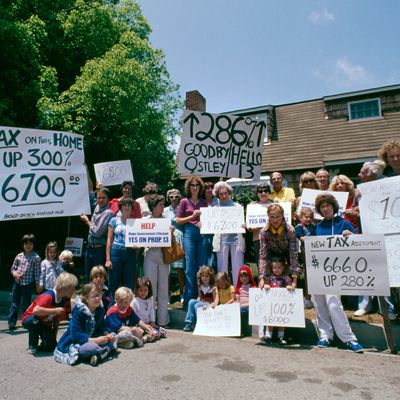
It’s often referred to as the “third rail of California politics” — if you touch it you die. But it’s now likely that an effort to significantly roll back Proposition 13, the famed property tax limitation initiative enacted by voters in 1978, will be on the ballot in 2020. And it will likely split the political world right down the middle, with huge stakes for commercial property owners and the state and local governments (and particularly the schools) that rely on property taxes.
Prop 13 capped property taxes at one percent of assessed value at time of acquisition, and limited upward reassessments of property values to 2 percent per year so long as the property didn’t change hands. Over time it has had a profound effect on the entire taxation system in California, and has produced wildly variable property taxes on similar properties, depending on how recently they were built or acquired.
Vigilant longtime homeowners are the backbone of support for Prop 13. But the system treats residential and commercial real estate exactly the same. So for years, left-of-center political advocates and policy wonks have dreamed of a reform that would create a “split roll” approach where commercial properties would lose Prop 13 protections and be treated for tax purposes like real estate in the rest of the country.
Split-roll proponents initially considered a drive to place an initiative on the ballot this year, but decided a presidential-year electorate might be more favorable. They’ve now reportedly collected over 860,000 signatures, far more than the 585,000 necessary for certification.
What’s driving the initiative, of course, is a hunger for the state and local revenues that have for so long been taken off the table by Prop 13.
Proponents estimate that altering this part of Prop. 13 would provide $11.4 billion annually for state and local governments, with about $4.5 billion going to schools.
Unsurprisingly, backers include “good-government groups like the League of Women Voters, social justice groups like the Alliance of Californians for Community Empowerment and some prominent state and local teachers’ unions,” as Calmatters sums it up. The business community is adamantly opposed, of course, arguing that higher commercial property taxes will just be passed on to consumers, or alternatively, that another contributor to the high cost of doing business in California will damage the economy and repel investors. The California Republican Party, always ready for a tax fight, will almost certainly oppose split roll with gusto, and Democrats could be divided. And as with any long-pending ballot initiative, there’s always the possibility some compromise could be worked out in the interim.
One inevitable wrinkle in the debate that will soon get attention is the impact that exposing commercial, but not residential, real estate to higher taxes would have on land-use policies: this could encourage local governments to prioritize commercial over residential projects as revenue boosters, at a time when the shortage of affordable housing in California is already at epidemic levels and residential sales prices are sky-high. So some progress between now and 2020 on the state’s housing supply might be politically helpful to the coming proposition’s cause.
A USC/Los Angeles Times poll earlier this year pegged support for split roll at 54 percent. But no one is under the illusion that it’s anything like a slam dunk. It could become one of the most expensive California ballot initiative fights ever. That’s how much public and private money is at stake.






























